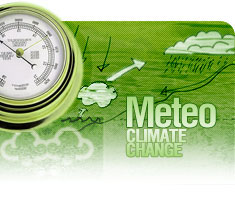How do we finance the climate adaption needed to stop global temperatures rising above 1.5 degrees? Our panel of experts share their thoughts.
1| Tax Wall Street
Hundreds of billions of dollars could be made available for climate finance by placing a small tax on financial transactions such as the trading of stocks and bonds. There's a big Robin Hood Tax movement behind this, with a group of European countries already on the cusp of establishing the world's first regional financial transaction tax. Karen Orenstein, senior analyst, Friends of the Earth US, Washington DC, USA @KarenOrenstein @foe_us
2| Remind politicians that where there's a will, there's a way
Sometimes the needs of a vulnerable community won't line up with the interests of an external invester, and public money is the only thing that will get the job done. For adaptation, being able to mobilise sufficient funds without the private sector is an imperative and the inability to generate the necessary funds is purely a political problem. The money is there, it's just being spent on the wrong things. Brandon Wu, senior policy analyst, ActionAid, Washington DC, USA @brandoncwu
3| Make existing pots of money go further
The $100bn developed countries signed up at Paris to raise each year needs to be deployed in a way that leverages at least another $900bn a year from the private sector. It could be best spent reducing investment risks and demonstrating the financial rewards associated with switching to cleaner energy solutions. Anthony Hobley, CEO, Carbon Tracker Initiative, London, UK @arhobley @CarbonBubble
4| Revisit individual country contributions
One of the first steps has to be going back to countries' Intended Nationally Determined Contributions (INDCs) that they agreed in Paris and developing clear strategies for investment priorities, as there is a huge amount of work to do to match different countries' needs with the financial resources available. Coming up with more specific strategies will help to direct public and private finance to priority programmes, policy and capacity needs.
Tim Ash Vie, head of climate change, Adam Smith International, London, UK @AdamSmithInt
5| Don't overlook challenges in developing countries
If you look at most INDCs from developing countries their emission reduction targets are subject to international climate finance, technology development and capacity building. What would happen if the means of implementation does not flow to developing countries? George Wamukoya, member of the African Group of Negotiators, Nairobi, Kenya
6| Look at Uruguay
Uruguay is a great example of how domestic policy has led to a transformation in its energy sector. They used a fairly small grant from the Global Environment Facility to draw up an ambitious renewable energy law including training for national electricity utility staff on how to integrate renewable energy into the grid. Uruguay is now a double world record holder: installing the most wind per capita and receiving the largest share of clean energy investment as a percentage of GDP. Joe Thwaites, research analyst, World Resources Institute, Washington DC, USA @WRIFinance
7| Offer incentives to switch to clean energy
Currently governments around the world subsidise fossil fuel exploration and production on a huge scale. Therefore a large onus is on governments to change and set up the right policies and regulations to drive investment in the direction of green energy rather than brown. Policymakers need to send clear signals to the private sector on where to invest their money. Sam Barnard, research officer, Overseas Development Institute, London, UK @samuelmarch
8| And tighten regulations on dirty energy
Regulators need to take a carrot-and-stick approach, incentivising finance for green energy while placing sanctions on finance for fossil fuels. Carbon pricing would send a significant message. There should also be manatory disclosure schemes where companies are expected to provide comprehensive reporting on all their energy investments, green and brown. Remco Fischer, programme officer, UNEP Finance Initiative, Geneva, Switzerland @UNEP_FI
9| Think long-term
Project-based, short-term, supply-driven funding is not very powerful in driving long term transformation. Some early feedback from applicants to the recent Green Climate Fund (GCF) funding round late last year had applicants reporting that accessing funding from the GCF is very demanding and costly. The GCF board itself seems to be also taking a narrow definition of what "climate finance" should be spent on - all of this is unhelpful from the perspective of developing countries trying to prepare for climate change. Aaron Atteridge, research fellow, Stockholm Environment Institute, Stockholm, Sweden @SEIclimate
10| Stimulate the energy market in developing countries
Looking long term, we also need to invest in creating a private sector in developing countries that can provide its own climate smart products and services. This involves creating the right incentives through fiscal and regulatory policies, subsidies or finance, as well as providing business support services in the right sectors, such as climate smart insurance. Tim Ash Vie
11| Balance climate finance flows
Most global climate-related finance is skewed toward mitigation rather than adaptation. But adaption money is needed to cover stronger early warning systems, address treatment of environmental refugees, and provide extreme weather insurance to 400 million more people in vulnerable countries by 2020. Virginie Fayolle, senior economist, Acclimatise, London, UK @VirginieFayolle
12| Remember raising the money is just half the battle
The other half is ensuring the money is channeled to the right recipients for the right activities. For climate finance to truly benefit impacted communities, we need to have community engagement at all levels of the process: policy, project design, implementation, monitoring and evaluation. The GCF makes some steps in the right direction, at least on paper, including by being the first fund to have a gender policy and action plan in place in advance of disbursing any money - but there's room for improvement as always. Aaron Atteridge



 Română
Română English
English


